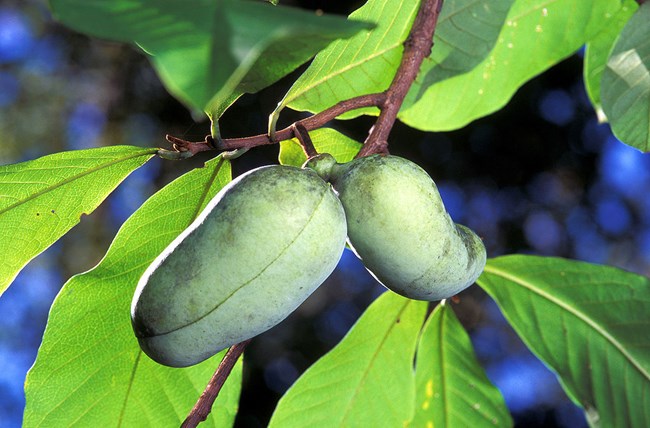Last updated: January 29, 2019
Article
PawPaw Sickness on the Lewis and Clark Expedition

Photo: Creative Commons
As they devoured the fruit, John Potts and George Shannon got sick, then others suffered from inflamed and swollen eyes. Captain Clark believed it was the ultraviolet light burning their corneas – sunlight reflecting off the water. Later, scholars deduced infectious conjunctivitis.
But it was author Ann Rogers who wrote in her book, “Lewis and Clark in Missouri,” the men likely suffered from an allergic reaction. The plant is listed as poisonous, similar to poison oak or ivy, causing painful dermatitis -- an irritation and inflammation with redness, swelling and itching of the skin. She contested the men’s rough, calloused hands didn’t react to the allergen, but the plant’s toxins were carried on their fingers and smeared across their sweaty faces and eyes.
Others dispute Rogers’ theory, asking why then weren’t other areas of the men’s bodies affected by the plant’s poisonous oils, such as arms, necks, or chests. Surely, they touched more than just their eyes.
Nonetheless, the party adjusted, moving the sick men into different canoes, and continued downstream, arriving in St. Louis three days later on September 23.
The pawpaw is an oversized berry native to Missouri, and belongs to the custard apple family. The flavor is often described as a cross between a banana and a mango. Have you tasted one?
